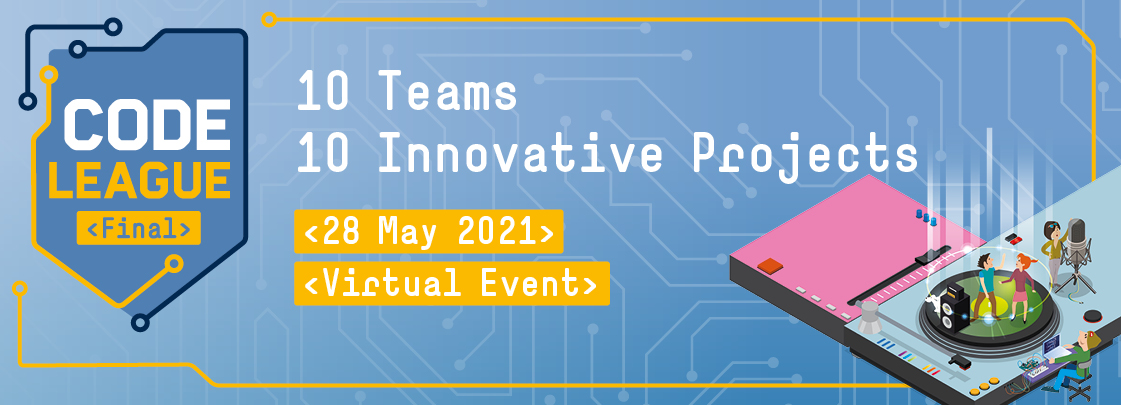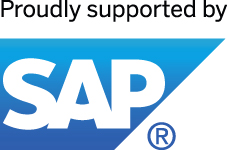European Code League: The project videos
Despite the pandemic and school closures, these teachers have developed coding projects for primary and secondary school STEM lessons together with their students.
The question now is: Which is the best coding project in Europe? Make up your own mind! The teams will present their ideas in short videos.

Coding the life
This project finds its origin in the framework of an Erasmusplus project. The students created an artificial pond at their school. To understand its evolution, they needed to monitor the physical and chemical environment. But how should they follow these parameters over times without intervening and therefor changing the outcome?
The answer is: Arduino. Together they created a "datalogger", using a temperature sensor, a humidity sensor, a pressure sensor, and a sunshine sensor as well as an Arduino UNO compatible acquisition card. They achieved the goal to store the measured data of these sensors to recover and analyze them on a microcomputer (PC or Mac).
Team: Philippe Wilock and Chistof Laeremans, Centre Scolaire du Sacré-Coeur, Charleroi, Belgium
Good Posture
Because of the pandemic and the resulting school closures, students around the world continue their education digitally. And so their computer and smartphone usage time has increased. This is taking a toll on the student’s health. This application measures factors such as distance to the screen, sitting posture and movement and gives visual and audible warnings to the student, if something is wrong.
Team: Merve Özer and Ceyda Fidan, Doku Schools, Öveçler/Çankaya, Ankara, Turkey
Modern Kitchen
This project combines physics with computer science. The students worked together to create a kitchen that saves energy by using different sensors. For example, in the kitchen, movement sensors can detect movement and start an illuminating system and a water filtering pump accordingly. They also installed CO2 sensor to optimize the air ventilation. This is the kitchen of the future.
Team: Catalina Stanca and Mihaela Ciapa, National College "Alexandru Ioan Cuza", Galati, Romania
Your environmental Foodprint
People are becoming more aware of the environmental impacts of their food shopping: Is it organic? Are they produced locally? But one often overlooked factor is the emission of carbon dioxide and how much water is used. By scanning their groceries with this developed app, the consumer gets all the necessary information and can therefore make better decisions.
Team: Florian Stupp, Otto-Hahn-Gymnasium, Böblingen, Germany
A redesigned potential chart
An important area of physics studies in Hungary is the mapping of the electric field generated by electric charges. This team automated the measurements with an Arduino.
They scanned the area point by point using a motor-controlled electrode. The measured results were collected into a MS excel table via a Com port and the data streamer plugin. Our innovative 3D chart builds up during a measurement. Potential valleys become easy to understand. Thus, they were able to connect microcontroller programming with the realisation of a real practical purpose.
Team: Dr. Károly Piláth and Fanni Vitkóczi, ELTE Trefort Ágoston Gyakorló Gimnázium, Budapest, Hungary
Atmosphere Control of a House
The project consists of a prototype of a house, where different factors are controlled by operating an Arduino board and different sensors and actuators. With these, the openings of doors, entry of people, the temperature, the humidity, and the brightness of the house are controlled.
The objectives of the project were: to know the functions of the Arduino board, sensors, and actuators; understand how to collect information, control, and execute actions; know the programming language; search for solutions to the challenges using technological resources. This project allowed the changing of teaching methodology, once the inquiry-based learning methodology was applied.
Team: Inês Madaleno and Samuel Branco, Externato Cooperativo da Benedita, Benedita, Portugal
Quake Alarm
Earthquakes are very common, especially in areas such as Greece. To raise awareness and cope with students’ anxiety, earthquake preparedness exercises are quite common during the whole school year. Yet the situation can become quite stressful when the natural phenomenon occurs.
This device first detects the primary waves advising the students to get under their desks. As soon as the secondary waves become very weak it utilizes an Artificial Intelligence (Fuzzy Logic) system to instruct them, at an appropriate time, to leave the classroom to a safer place. Thus, making sure that the evacuation was successful.
Team: Astrinos Tsoutsoudakis and Ioannis Tzagkarakis, Lower Secondary School of Gazi; Model Lower Secondary School of Heraklion, Crete, Greece
Foxfire - Browsing glowing woods
More than 70 species of fungi can produce light using an enzymatic mechanism. This area of bioluminescence has only been intensively researched in the last few years. In a work-sharing approach, this team dealt with the cultivation of bioluminescent fungi and the light emitted by them. For data acquisition and analysis, Python programs for the Raspberry Pi were developed: The camera module was used to document the growth phase of the fungi.
Brightness and spectral sensors then enabled the investigation of luminous flux and spectral composition of the light. Among other things, periodic fluctuations of the light emission were analyzed.
Team: Carolin Möbus und Heiko Stangl, Hector Seminar, Mannheim, Germany
Smart City of Vukovar - our view of smart living
Working with Arduino, this team built a model of their hometown Vukovar. They presented their ideas regarding the infrastructure of a “Smart City". It mainly focuses on the main road in Vukovar, as well as a sidewalk along the riverbank of Danube. By using sensors, IoT and electronic boards, they collected important data in real time.
Thus, their model offers a solution to greater electricity saving, better use of a solar Sun power panels, and reducing traffic jams on the road as well as around the parking lots. True to the motto: “We provide a solution for less pollution”.
Team: Davor Šijanović and Sanja Pavlović Šijanović, Gymnasium Vukovar, Vukovar, Croatia
CaeliBox
The CaeliBox is a “magic box”. Using sensors, the students can measure different air parameters (concentration of CO2, humidity, pressure, temperature, noise and other noxious substances) present in their town. The data is transferred to a server so the students can access and work with it any time.
For example, they could compare the data they collected on warm days with those that were collected on cold days. Or find out, where the most polluted areas in their city are.
Team: Mihaela Giurgea and Dr. Corina Toma, Tiberiu Popoviciu "Computer Science High School, Cluj Napoca, Romania
